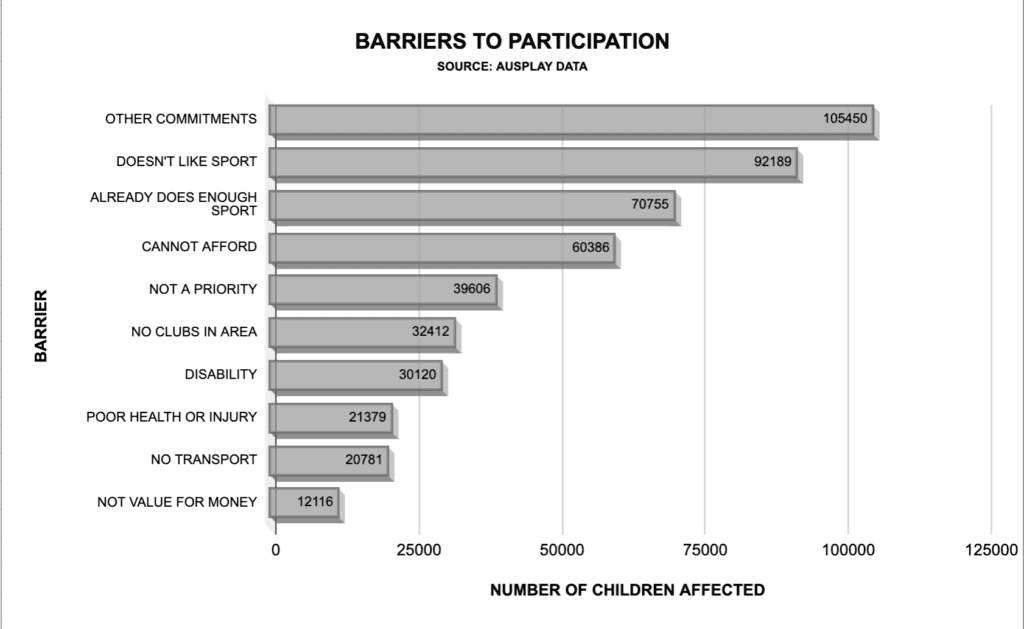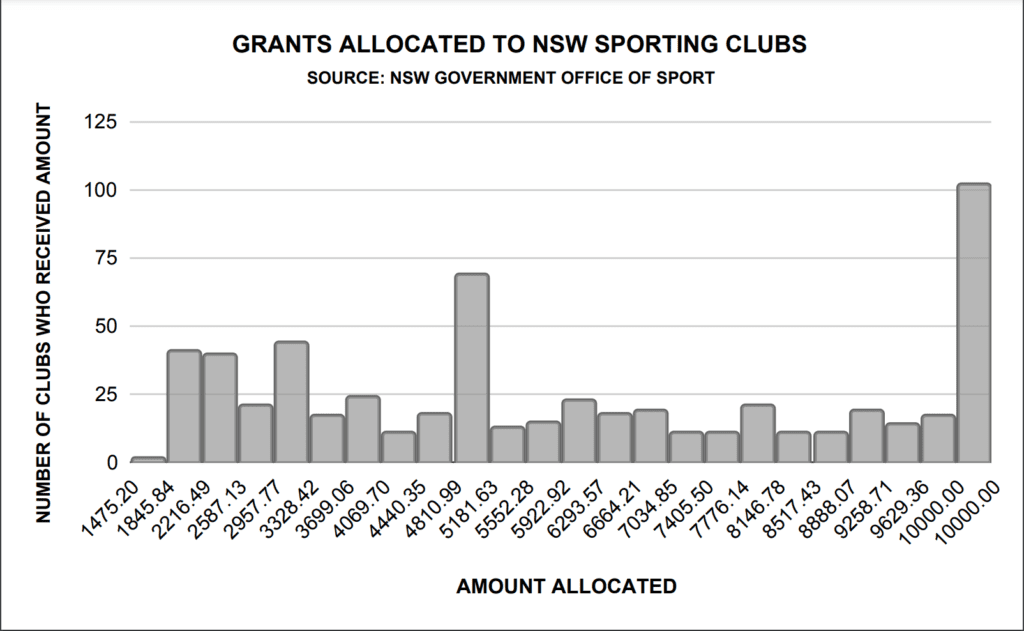There are fears that rising fees and expenses are impacting participation rates in children’s sport and are placing many families under financial pressure.
A recent AusPlay survey has found that the average cost to participate in sport is about $970 per year, with more than half of that chewed up in basic membership costs.
With groceries, fuel and other living expenses on the rise, it seems parents are reconsidering spending money on their children’s organised sport.
Chairman of the North East Football Commission, John Byrne said he understands the financial burden extracurricular activities can have on families.
“We should never knock anybody back because they haven’t got the money to register,” Mr Byrne said.
“We should have programs in place where if it’s $100 to join the footy team – that there’s a way to register anyway and cover that cost.
“It is different for different sports. If your child is wanting to play a sport like cricket – you have to purchase a cricket bat, helmet, hat, pads, cricket whites – all that sort of stuff, well that’s a bigger barrier to playing sport than maybe just turning up in your football boots.”
A 2023 survey conducted by the not-for-profit Australian Sports Foundation found 50 per cent of sporting clubs were seeing a decline in memberships due to financial burden.
According to recent data from the Australian Bureau of Statistics (ABS), the participation rate in organised sport among Australians aged 15 years and above stands at 65 per cent. This rate indicates a slight decline compared to previous years, sparking concerns about potential barriers to entry.

The cost of registrations is a critical factor that influences sports participation rates. To evaluate this aspect, The Australian Sports Commission conducted a nationwide survey in 2020.
This survey targeted individuals who cited cost as a reason for non-participation or reduced participation in organised sports.
The data has revealed that 42 per cent of respondents considered the cost of registrations a significant deterrent to sport participation. Furthermore, 27 per cent of respondents said that they had reduced their participation in sports due to rising registration costs.
These figures suggest a considerable impact on sports engagement due to financial considerations.
Costs are not the only factor affecting participation rates as the long-lasting effects of Covid have also had an impact.
“There’s almost a lost generation,” Mr Byrne said.
“There’s a two-year cohort of kids who pretty much are not participating in organised sport at the same rate as others because when Covid hit – their seasons were interrupted and they just never returned to the sport.”
A New South Wales initiative that has reduced the financial stress around community sports is the government-led ‘Active Kids Program’.
The program provides two $100 vouchers for parents, guardians and carers of school-enrolled children to use towards sport and active recreation costs each year.
You need to apply for the vouchers through Service NSW, have a current Medicare card – and your child must be under 18. However, the vouchers end on June 30 and it is unclear if the program will continue.

Data from various sports governing bodies and organisations across Australia indicate that sports with higher registration fees experienced a decline in overall participation levels compared to sports with more affordable options.
Sports requiring specialised equipment or facilities, such as cricket and golf, witnessed a decrease in participation rates, potentially due to the associated costs.
On the other hand, sports that offered lower-cost alternatives, such as football and netball, demonstrated relatively stable or increasing participation numbers.
Deputy Chairperson of Sport NSW, Tiffany Robertson said she believes the answer to access is more government funding.
“Investment in elite sports does not always drive grassroots participation,” Mrs Robertson said.
“Yet government funding is still being funnelled into major sport infrastructure projects at a disproportionate rate compared to grassroots funding.
“I think it’s important to strip things back and look at the health implications a decline in participation could cause. If children aren’t building healthy habits and behaviours at a young age – that could impact them in the future.”

Registration costs have emerged as a noteworthy element influencing the declining participation rates in various sports, especially among individuals and communities with lower income levels.
To address this issue and foster inclusivity, sports organisations and governing bodies are urged to explore potential solutions, such as subsidising registration fees, granting scholarships, or introducing affordable alternatives.
These strategies aim to enhance accessibility to sports for Australians from all walks of life.
Photo Credit Click Community

